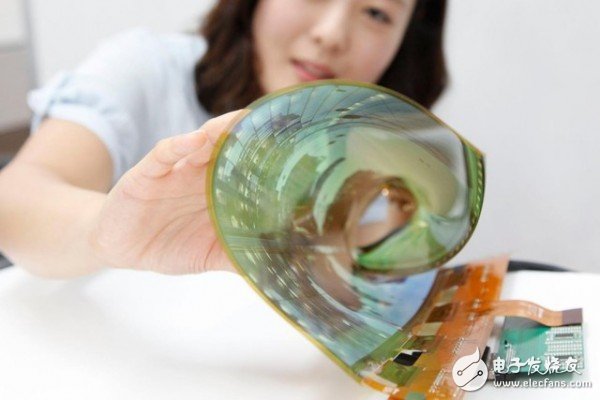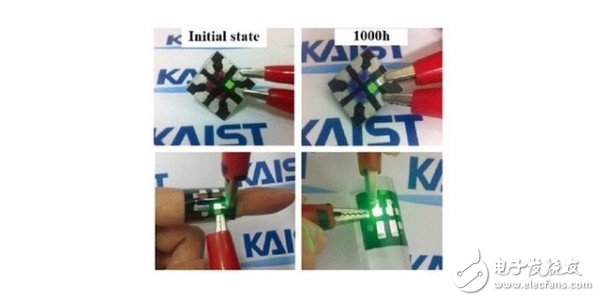To be truly wearable, we are still far behind. However, a group of Korean researchers have brought this goal closer, and they have created the first OLED screen that can actually be worn. According to Business Korea, two research teams from the Korea Institute of Science and Technology (KAIST) and Kolon Glotech have created an OLED technology that can be used as a screen for textiles. Compared to other competing technologies, this technology can bring a more flexible screen. Schematic Flexible, foldable, wearable displays existed before the OLED screen appeared. Because the OLED is a self-illuminating screen, it can be made into a thin, flexible screen using a special plastic plate. Materials are one of the factors limiting their development, but the OLED screen itself is also. OLEDs are less durable and are prone to breakage. It is difficult to embed the display in a piece of cloth. Because traditional textiles are too rough and have varying degrees of elongation at different temperatures. This technology is still very immature at the moment. But these researchers have come up with a way to make something new. They combine textiles with glass panels while maintaining the flexibility of the textile. The OLED can then be attached to this approximately glass material. Matching The Korea Academy of Science and Technology and the Korea Kolon Group have high hopes for the future of textile displays. “Fabric-based OLEDs are more flexible than plastics and have high stability, which is expected to promote the development of comfortable wearable displays,†said Choi Kyung-chul of the Korea Institute of Science and Technology. Fabric OLEDs currently have a service life of more than 1000 hours. If it is used lightly, it can last for more than 3,500 hours. This has no advantage over our previous screens, but it has taken a big step in the development of wearable displays. Let us hope that the research that follows will further improve this technology, so that the screen can be worn on the body.
Steel Structures can be used in many industries such as foundation reinforce, electric power transmission structures and tubular scaffolding, etc.
A flange can also be a plate or ring to form a rim at the end of a pipe when fastened to the pipe. A blind flange is a plate for covering or closing the end of a pipe. A flange joint is a connection of pipes, where the connecting pieces have flanges by which the parts are bolted together.
Although the word flange generally refers to the actual raised rim or lip of a fitting, many flanged plumbing fittings are themselves known as 'flanges':
There are many different flange standards to be found worldwide. To allow easy functionality and interchangeability, these are designed to have standardised dimensions. Common world standards include ASA/ASME (USA), PN/DIN (European), BS10 (British/Australian), and JIS/KS (Japanese/Korean). In the USA, ANSI stopped publishing B16.5 in 1996, and the standard is ASME B16.5
Steel Structures Carport,Substation Steel Structure Fabrication,Peb Steel Structure,Light Steel Structure Yixing Steel Pole International Trading Co., Ltd , https://www.yx-steelpole.com
